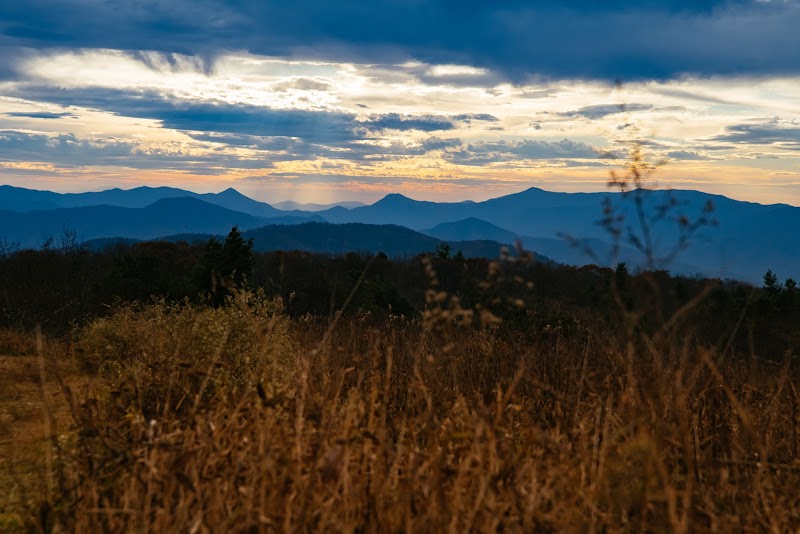
Stand Apart on Eastern America’s Highest Peak: Exploring Mount Mitchell State Park
Standing atop the highest point in Eastern America, Mount Mitchell offers a unique blend of rugged wilderness and rare ecosystems reminiscent of Canada. This North Carolina park invites hikers and nature lovers alike to experience breathtaking views, challenging trails, and an immersive mountain adventure.
Dress in Layers for Fluctuating Temperatures
The summit’s climate can shift drastically throughout the day; bring breathable base layers, insulating mid-layers, and a windproof outer shell to stay comfortable.
Hydration is Key at High Elevations
The thinner air and physical exertion demand more water than you might expect—carry at least 2 liters and consider electrolyte replacements.
Start Early to Avoid Afternoon Storms
Summer afternoons often bring quick-moving storms; beginning your hike early lets you enjoy clear skies and safer conditions on the summit.
Wear Sturdy Footwear with Good Traction
The trail features rocky stretches and occasional slippery patches, especially near the summit—solid hiking boots will provide stability and protection.
Stand Apart on Eastern America’s Highest Peak: Exploring Mount Mitchell State Park
Rising 6,684 feet above sea level, Mount Mitchell stands as the tallest point in the eastern United States, a fiercely independent giant sculpted by forces over a billion years old. Located in Yancey County, North Carolina, Mount Mitchell State Park invites adventurers to step into a remarkable world where southern Appalachia meets the flora and fauna of Canada. The park’s 1,946 acres are a living museum of rare plants and animals, sheltering species seldom seen elsewhere in the state. The Black Mountains, rugged and brooding, cast long shadows over rolling ridges and fertile valleys that stretch to the horizon.
Approach the summit trail, and the forest wraps around you like a cool, misty blanket, its climate leaning into the chilliness more common to northern forests than the rest of North Carolina. Nights and days on the mountain can surprise even summer visitors with biting cold, so come prepared with layers that breathe and protect. The hike itself is a manageable challenge, with clear, well-maintained paths leading you through balsam firs and spruce. The climb heightens your sense of being part of a storied geography—where each step pushes upward into thinner air and wider views.
Beyond the summit, the park’s visitor center offers an exhibit about the mountain’s geology and natural history, grounding your elevation with context. For those who want to linger, camping under the stars here is an opportunity to listen to the mountain’s voice—whispering winds, rustling leaves, and nocturnal creatures testing their limits. Rangers regularly share their knowledge through interpretive programs, helping visitors read the silent messages of the forest and understand the delicate balance that sustains this high-elevation ecosystem.
Whether you’re tracing the steps of ancient rock formations or scanning the horizon for a break in the clouds, Mount Mitchell promises an experience where adventure meets insight. Prepare your gear, pace yourself, and engage with nature on its own terms—this is a mountain that remains fiercely itself, challenging and welcoming in equal measure.
Nearby Trips
All Adventures
Boat Charters
Water Activities
Adventures near Burnsville, North Carolina
Discover the unique and memorable adventures that make Burnsville, North Carolina special.
Frequently Asked Questions
How long is the hike to the Mount Mitchell summit?
The main trail to the summit from the parking area is approximately 1.5 miles one way, typically completed in 2 to 3 hours round-trip depending on pace and stops.
Do I need a permit to hike or camp at Mount Mitchell State Park?
No permit is required for day hikes, but camping in the park’s developed campgrounds requires a reservation and camping fees.
What wildlife might I see on the trails?
Visitors commonly spot black bears, white-tailed deer, various bird species including the rare Spruce Grouse, and diverse amphibians typical of high-elevation forests.
Is the summit accessible year-round?
Yes, but winter conditions can close park roads or make trails hazardous; check the park’s status before visiting in the winter months.
Can I bring my dog on the hiking trails?
Dogs are allowed on leashes in the park but are restricted in certain areas; be sure to check local regulations and prepare to manage your pet’s impact on wildlife.
Are there guided tours or ranger-led programs available?
Yes, the park offers scheduled interpretive and educational programs year-round, providing insights into the mountain’s ecology, geology, and history.
Recommended Gear
Layered Clothing System
Allows adaptation to the summit’s changing weather—from chill to sun—ensuring comfort and safety.
Sturdy Hiking Boots
Provide reliable traction and ankle support necessary for rocky and sometimes slippery mountain terrain.
Water Bottle or Hydration Pack
Staying hydrated is critical at high elevations and during physical exertion.
Windproof Jacket
Protects against sudden cold winds and rain on the exposed summit.
Local Insights
Hidden Gems
- "Balsam Loop Trail offers quieter forest exploration away from the summit crowds."
- "Mount Mitchell Rhododendron Gardens bloom spectacularly in late spring."
- "Observation Deck on the summit provides 360-degree views rarely captured in pictures."
Wildlife
- "Look for the elusive Northern Saw-whet Owl during dusk hours."
- "High-elevation salamanders thrive uniquely in this moist environment."
- "Seasonal migratory birds pass through, offering birdwatching opportunities."
History
"Mount Mitchell was named after Elisha Mitchell, the professor who proved its status as the highest peak east of the Mississippi. The Black Mountains have witnessed ancient geological shifts that shaped the Appalachians and protected unique ecosystems."